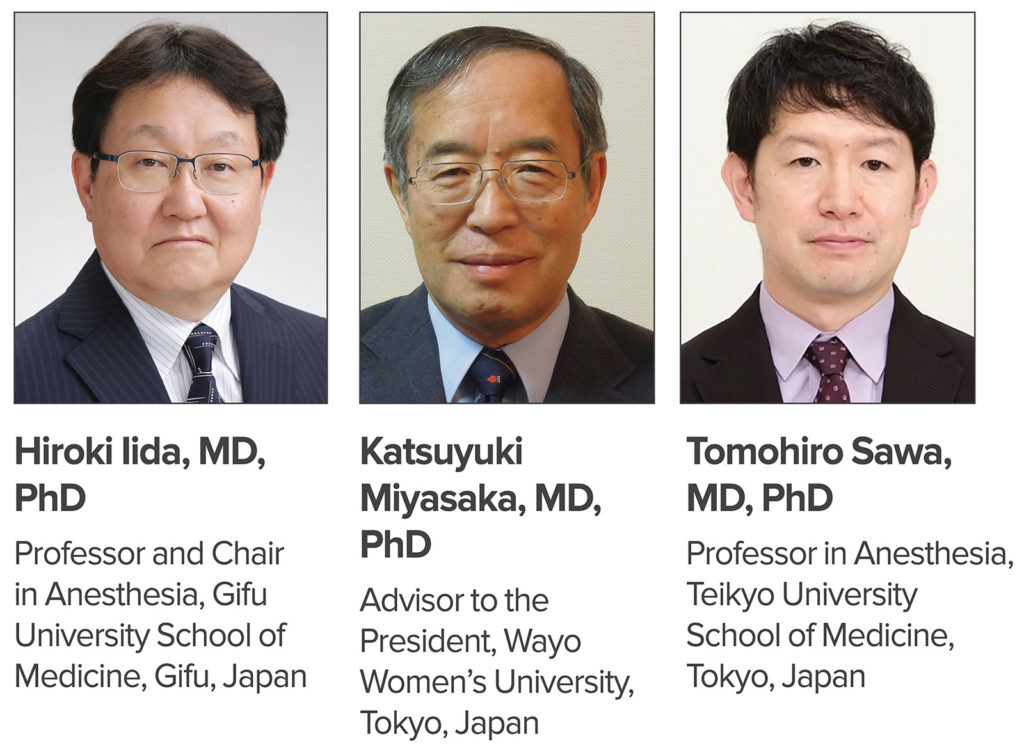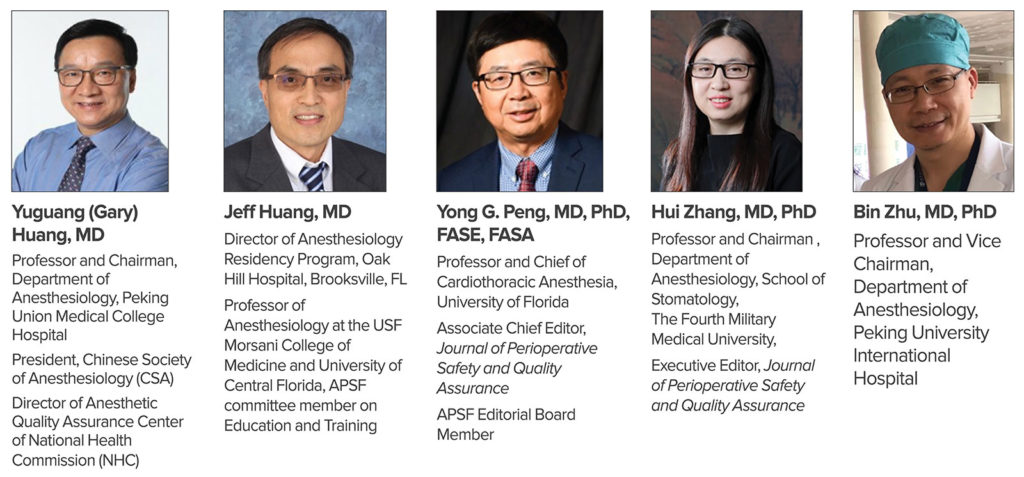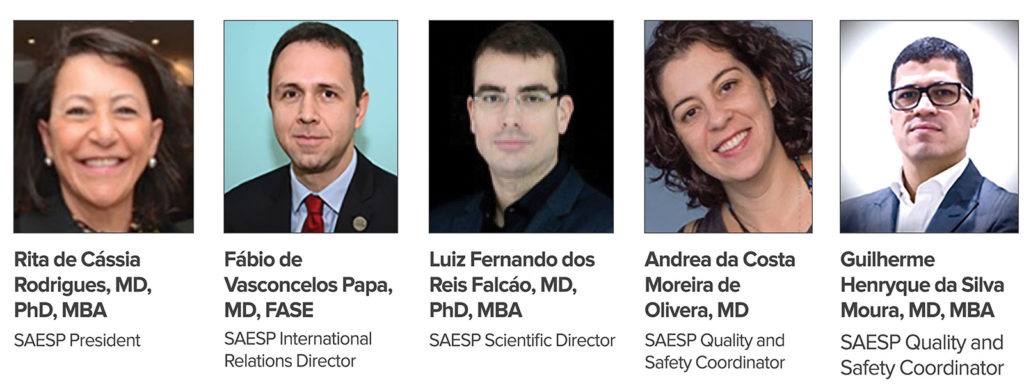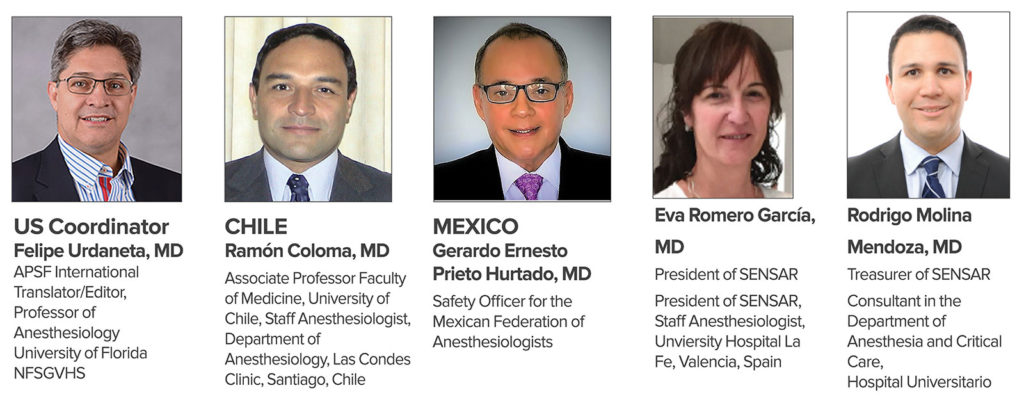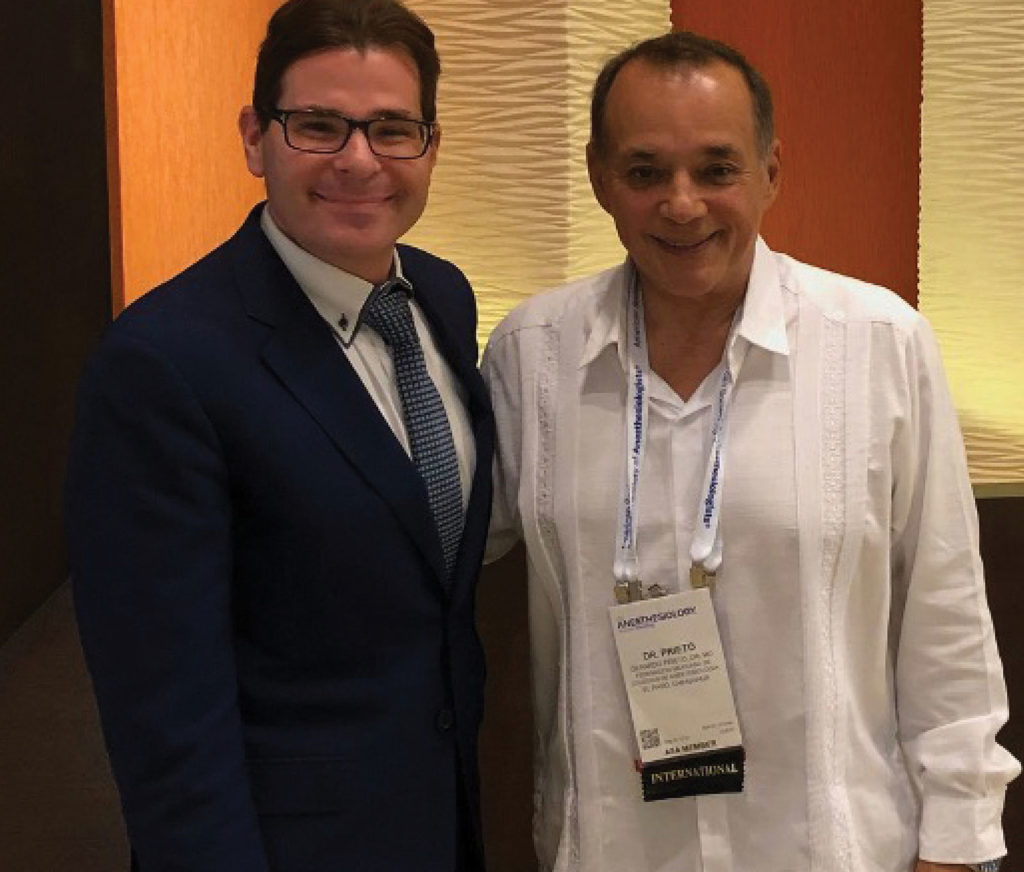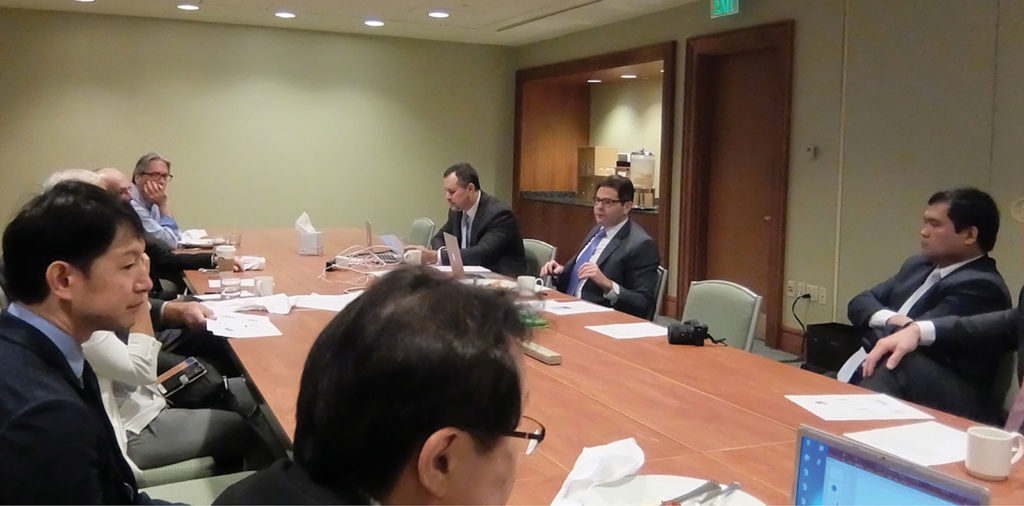JAPANESE TEAM: 2017—present
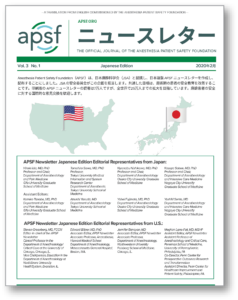 When the APSF was founded in 1985, safety issues in anesthesia in Japan were more of a personal nature involving ethics and discipline. The importance of keeping direct physical contact with the patient and the use of continuous monitoring with a monaural precordial stethoscope, especially in the field of pediatric anesthesia, where rapid changes in vital signs are the norm, was (and still is) of paramount concern. It was frightening to see the lack of physical contact or use of monitors in adult practice, except for the use of ECG. Pulse oximeters were not readily adopted and at some hospitals thought of as a nuisance, and not of value. Little effort was made to take advantage of their potential, until finally their usefulness was recognized. The present situation with capnometers is similar around the world, where their use with non-intubated and sedated patients has not become routine practice.
When the APSF was founded in 1985, safety issues in anesthesia in Japan were more of a personal nature involving ethics and discipline. The importance of keeping direct physical contact with the patient and the use of continuous monitoring with a monaural precordial stethoscope, especially in the field of pediatric anesthesia, where rapid changes in vital signs are the norm, was (and still is) of paramount concern. It was frightening to see the lack of physical contact or use of monitors in adult practice, except for the use of ECG. Pulse oximeters were not readily adopted and at some hospitals thought of as a nuisance, and not of value. Little effort was made to take advantage of their potential, until finally their usefulness was recognized. The present situation with capnometers is similar around the world, where their use with non-intubated and sedated patients has not become routine practice.
The “No Patient Shall Be Harmed By Opioid-Induced Respiratory Depression” campaign, an outstandingly proactive idea, led by the APSF in 2011 prompted me to champion the concept in Japan where a significant language barrier exists. Many of us understand English, but the knowledge has to be translated into our own language to make a lasting memory. Fortunately, discussion about the possibility of an international newsletter occurred with Prof. Steven Greenberg, MD, in Tokyo at the IAMPOV meeting in October 2015, and at a subsequent discussion with Robert Stoelting, MD, past president of the APSF, in 2016 at ASA in Chicago. Prof. Greenberg moved very swiftly for us as did Mark Warner, MD, the current president of APSF, and Prof. E. Inada, ex-president of the Japanese Society of Anesthesiologists (JSA). Professor H. Iida, chairman of the anesthesia safety committee of the JSA was appointed as the person in charge of this project.
The first Newsletter in Japanese was released on November 2017, and notices of subsequent Newsletters were put in JSA’s newsletters with 12,000 member-anesthesiologists taking advantage of reading selected articles in their own language. Many thanks are due to Prof. Greenberg, a man of action. We are so grateful to the APSF for their generous offer and support. With your support, we can continue to devote our attention to improving anesthesia patient safety.
We understand that the APSF Newsletter is now translated into four other languages. We respect the APSF as a true international pioneer and leader in anesthesia patient safety, actually executing international leadership in the extremely difficult inward-looking political environment of so many countries. We admire the ability and energy that the APSF pours into its mission and the leadership of Prof. Warner, president of the APSF.
We look forward to the continued activity of the APSF in the international sphere and to expansion of its role in supporting scientific research and thought in medicine. This work is increasingly important given the pandemic and volatile political situation throughout the world. The importance of patient safety is a core value and we hope (y)our mission succeeds.
CHINESE TEAM: 2018—present
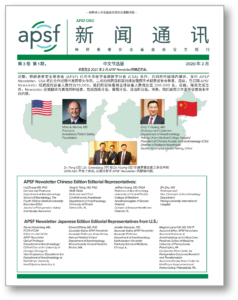 From 2014, when we started off by translating select articles from APSF Newsletters, to now translating and publishing every edition on the Chinese Society of Anesthesiology websites and social media, APSF has grown to reach physicians all over China. Through our translations, we have been able to raise awareness on important perioperative safety measures and steps in quality patient care in China. These collective efforts have promoted anesthesia professionals to take ownership in implementing and improving safe patient care. We would like to congratulate APSF on 35 years of advocacy for patient safety, educating providers in America and all over the world.
From 2014, when we started off by translating select articles from APSF Newsletters, to now translating and publishing every edition on the Chinese Society of Anesthesiology websites and social media, APSF has grown to reach physicians all over China. Through our translations, we have been able to raise awareness on important perioperative safety measures and steps in quality patient care in China. These collective efforts have promoted anesthesia professionals to take ownership in implementing and improving safe patient care. We would like to congratulate APSF on 35 years of advocacy for patient safety, educating providers in America and all over the world.
PORTUGUESE TEAM: 2018—present
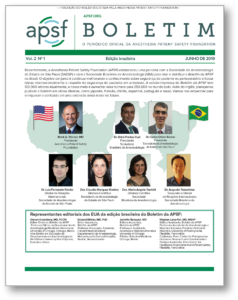 The partnership between the São Paulo State Society of Anesthesiology (SAESP) and the APSF Newsletter, through well-planned content, has contributed a lot to enhance the discussion on patient safety.
The partnership between the São Paulo State Society of Anesthesiology (SAESP) and the APSF Newsletter, through well-planned content, has contributed a lot to enhance the discussion on patient safety.
Sharing experiences on a global level brings the lessons learned and the exchange of experiences as an important tool to build a positive safety culture in the engagement of the Society of Anesthesiology of the State of São Paulo with patient safety.
FRENCH TEAM: 2018—present
SFAR/APSF Collaboration: Another Step Towards The Common Goal of Patient Safety
Theissen A, Blanie A, Bordes J, Bordes-Demolis M, Bourgain JL, Fletcher D, Kurrek M, Lemarie J, Morau E, Pelligand L, Picard J, Piriou V, Soufir L, Trouiller P. From the Risk Analysis and Management Committee of the French Society of Anesthesia and Intensive Care Medicine
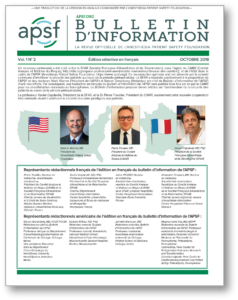 A partnership was created in 2018 between the SFAR (French Society of Anesthesia and Intensive Care Medicine), under the auspices of the CAMR (Risk Analysis and Management Committee), and the Anesthesia Patient Safety Foundation (APSF). This new link that unites us was forged by the common desire to improve the safety of patients over the course of the perioperative period.
A partnership was created in 2018 between the SFAR (French Society of Anesthesia and Intensive Care Medicine), under the auspices of the CAMR (Risk Analysis and Management Committee), and the Anesthesia Patient Safety Foundation (APSF). This new link that unites us was forged by the common desire to improve the safety of patients over the course of the perioperative period.
The CAMR is the task force of the SFAR that has been assigned the objective of analyzing the potential risks for patients and promoting strategies to overcome these risks.
Just like the APSF, in recent years the CAMR has worked on issues aimed at improving the quality and safety of anesthesia and intensive care: the creation and the dissemination of cognitive aids or crisis checklists, the formulation of recommendations for clinical practice (such as the prevention of medical errors, monitoring during patient transport to the postoperative anesthesia care unit and in the hospital, reducing distractions in the operating theatre, safeguarding of the administration of opioids, and modalities for monitoring), partnering with insurance companies to provide information based on the analysis of the closed claims, fact sheets (e.g., transfers to the ICU, prevention of errors involving the wrong side, etc.)
The APSF and the SFAR hence have the same objectives of continued improvement of safety in anesthesia with zero tolerance for incidents. We are proud to join forces and we need everyone to participate in this endeavor. It is with this in mind that the CAMR helped to create a French version of the APSF Newsletter that is published by the APSF and distributed among its French constituency.
SPANISH TEAM: 2018—present
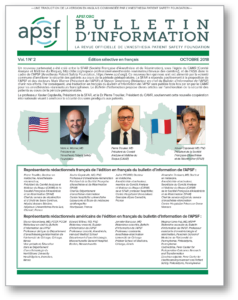 Although a large number of Spanish speaking anesthesia providers can read scientific literature in English, translating the APSF Newsletter into their native tongue adds a new dimension. It assures that no one is left behind with the vital message and information the APSF brings. The effort on behalf of the organization and the editorial group to translate the Newsletter into several languages has been tremendous; and therefore, we are thankful for this. Carrying the flag of “safety” for such a long time is a testament to the role APSF plays.
Although a large number of Spanish speaking anesthesia providers can read scientific literature in English, translating the APSF Newsletter into their native tongue adds a new dimension. It assures that no one is left behind with the vital message and information the APSF brings. The effort on behalf of the organization and the editorial group to translate the Newsletter into several languages has been tremendous; and therefore, we are thankful for this. Carrying the flag of “safety” for such a long time is a testament to the role APSF plays.
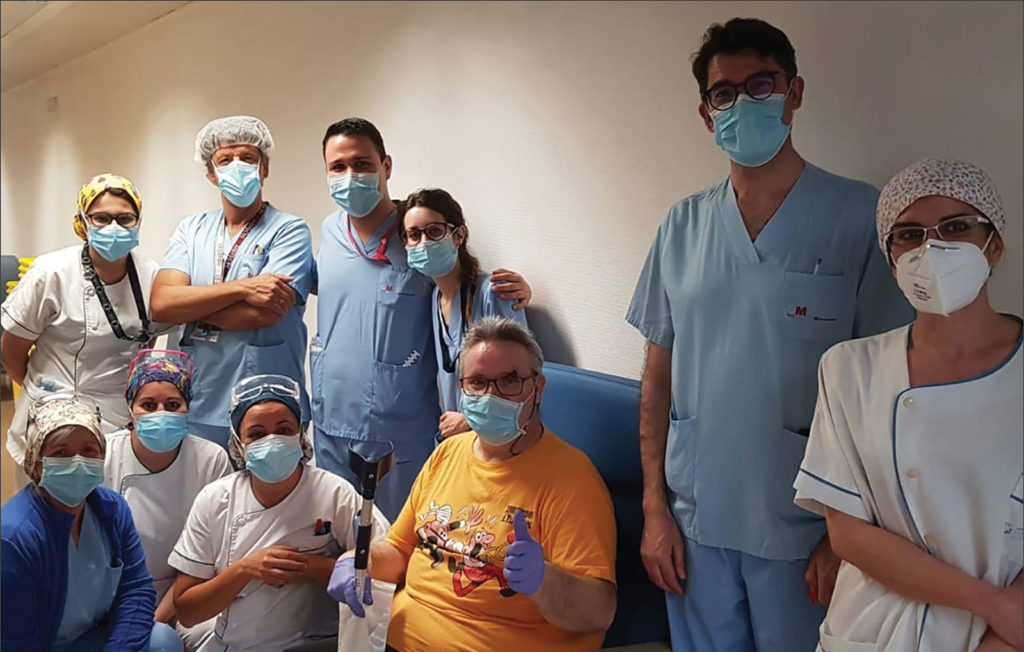
It is a great honor for Spain and SENSAR to be a part of such an amazing initiative in the history of the APSF to make its contents available in different languages, and in our case for the Spanish-speaking world. We consider availability of information a milestone to promote a culture of patient safety.
Anesthesia Team at Hospital Universitario Alcorcón; standing from the left: Miriam del Vals (nursing assistant, Santiago Garcia del Valle (Chief of Staff), Rodrigo Molina (Anesthesiologist, Board Member of SENSAR, reviewer of the Spanish APSF Newsletter), Sara Garcia (Anesthesiologist), Antonion Bartolomé (Anesthesiologist, co-founder of SENSAR), Rocio Albarran (nurse). Below from the left: Lourdes Garro and Elena Garcia (nursing assistants), Maite Fernandez (nurse), Angel (patient recovered from Covid-19 in our unit.)


 Issue PDF
Issue PDF